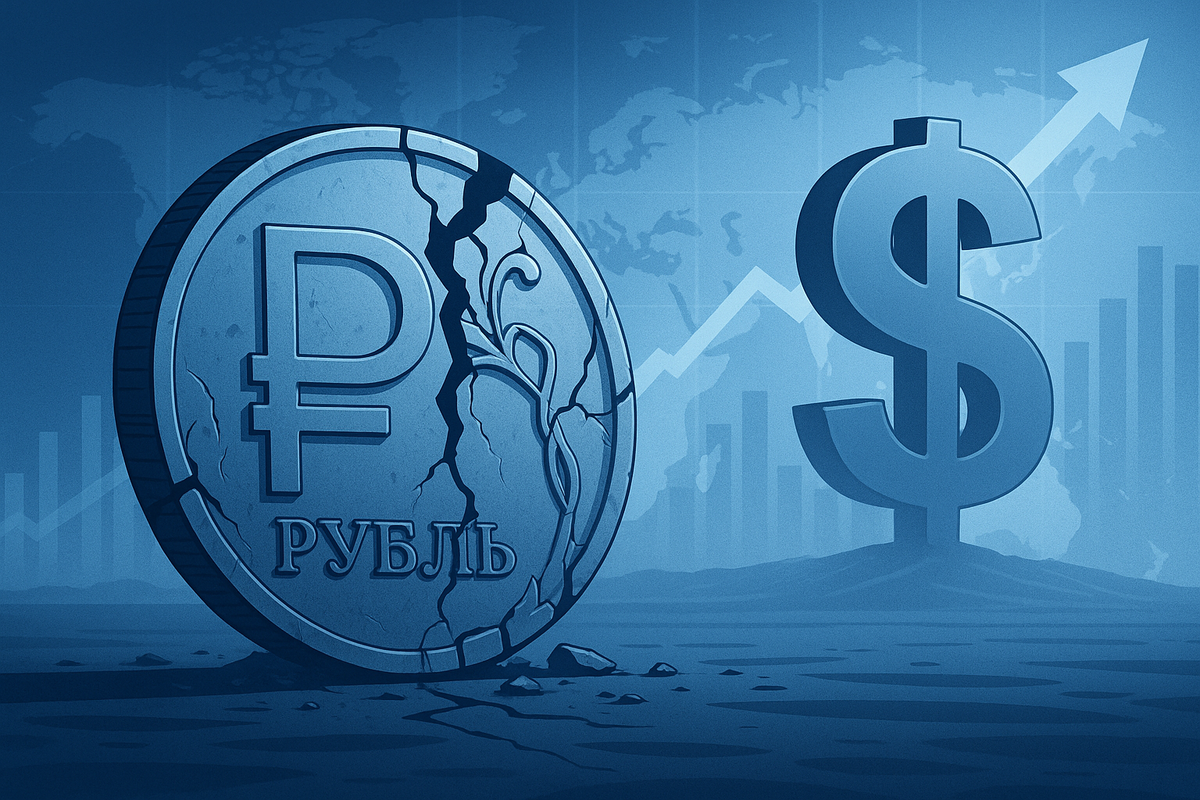Can Trump Crash the Ruble and End Putin’s War?

The war in Ukraine drags on, and Vladimir Putin continues to show defiance despite mounting pressure. President Trump tried diplomacy once, but Putin spit in his face. That time has passed. If Trump wants to end this war on his terms, he does not need to punish China or India or lean on reluctant allies. He can go directly for Russia’s weakest point, the ruble.
Russia’s Reserves: A Mirage of Stability
At first glance, Russia appears financially strong. As of September 2025, the Central Bank of Russia reported nearly $700 billion in international reserves, a rebound from the $600 billion level of just eighteen months ago. The ruble even managed an extraordinary rally earlier this year, strengthening from 113 per dollar in January to the low 80s by midyear, one of the best-performing currencies in the world.
But beneath the surface, the picture is far less stable. Roughly $300 billion of Russia’s reserves remain frozen abroad and out of Putin’s reach. The ruble’s appreciation has been manufactured by artificial means, soaring energy prices at the start of the year, capital controls that prevented money from leaving the country, and heavy-handed central bank interventions. By late 2025, cracks had already begun to show, and the ruble started weakening again. At the same time, Russia remains dangerously dependent on oil and gas, which contribute nearly half of its federal revenues and close to one-fifth of GDP. This leaves Moscow’s balance sheet vulnerable to global price swings and sanctions that curb energy flows.
The Human Cost of a Currency Collapse
If the ruble were to collapse to 200 per dollar or beyond, the consequences for the Russian people would be catastrophic. Inflation would surge to levels unseen in decades, making imported goods such as food, medicine, and basic consumer products unaffordable. Savings held in rubles would evaporate, wiping out the financial security of millions of families. As businesses struggled with the spiraling cost of inputs, jobs would vanish and unemployment would surge.
Russia has endured this trauma before. During the early Soviet period, hyperinflation rendered the currency worthless and forced multiple redenominations. In the early 1990s, after the fall of the Soviet Union, quadruple-digit inflation erased incomes and pushed the economy into freefall. Those episodes devastated Russian households and unleashed social unrest on a massive scale. A repeat of that experience would shatter any illusion of stability that Putin tries to project today.
Trump’s Financial Weapon
President Trump holds the ultimate financial weapon: the printing press of the world’s reserve currency. By directing the Treasury and trusted allies like Scott Bessent to short the ruble aggressively through forward contracts and futures, the United States could unleash overwhelming selling pressure. The Russian Central Bank would be forced into a corner—either burn through its usable reserves in a desperate defense or allow the ruble to collapse.
Russia’s reserves may look impressive on paper, but when $300 billion is frozen and the rest is steadily drained in interventions, the war chest begins to look far smaller. In practice, the Kremlin might only have months, or even weeks, before it runs out of firepower. Once the ruble breaks, so too does the regime’s ability to hold the line economically.
Answering the Critics
Skeptics will argue that the foreign exchange market is too vast to move, with daily turnover of $7 trillion. They will warn that government-directed shorting of a currency is unprecedented and risks destabilizing the global system or undermining confidence in the dollar. But these objections overlook the purpose of the exercise. This is not about preserving the normal workings of the market. This is about waging war through finance, using the overwhelming weight of the U.S. dollar to crush Russia’s ability to sustain its aggression.
Incremental measures such as sanctions, commodity price caps, and secondary restrictions have inflicted pain but failed to change the course of the war. Putin has adjusted to them and carried on. A direct strike on the ruble, however, would hit at the very heart of his regime’s claim to stability.
The Moment for Boldness
Putin has proven that he will not back down from pleas or half-measures. He only understands strength. A collapse in the ruble would strip him of that strength, unleashing inflation, unemployment, and unrest at home. It would force him to negotiate honestly, or risk losing the very power he clings to.
President Trump has a choice. He can continue with a cautious strategy that prolongs the war indefinitely, or he can wield America’s unmatched financial firepower and bring Putin to his knees. The ruble is Russia’s Achilles’ heel, and striking it is the fastest path to peace.
The world needs this war to end. It is time for boldness. It is time for Trump to crash the ruble.





